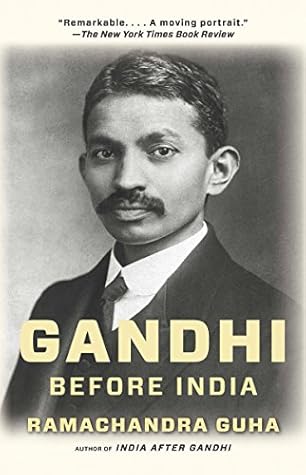More on this book
Community
Kindle Notes & Highlights
Gandhi vigorously advocated the use, within India, of languages other than English. All Indians should know their mother-tongue. Hindi could be promoted as a link language, to be read in either the Devanagari or Persian script, thus forging closer relations between Hindus and Muslims.
His manual consist of some eccentric, impractical ideas 💡. However some are really good. Some very misleading like Hindu -Muslim unity before British
The letter concisely captures Gandhi’s philosophy of non-violent resistance to unjust laws. He was a strategist of slow reform, of protesting by stages, of systematically preparing himself and his colleagues rather than spontaneously (or, as he would have it, haphazardly) rushing into confrontation.
April 1912, Gandhi wrote to Ratan Tata, giving an account of the struggle he had so generously supported. He described the teaching methods, the regime of labour and the student profile at Tolstoy Farm. There were currently eighteen Gujaratis, six Tamils and one North Indian in the school. These students were taught that ‘they are first Indians and everything else after that, and that, while they must remain absolutely true to their own faiths, they should regard with equal respect those of their fellow-pupils.’
Seme published an article advocating the formation of a South African native congress. ‘The demons of racialism,’ he wrote, ‘the aberrations of the Xhosa–Fingo feud, the animosity that exists between the Zulus and the Tongas, between the Basutos and every other Native must be buried and forgotten … We are one people. These divisions, these jealousies, are the cause of all our woes and of all our backwardness and ignorance today.’42 On his visit to Tolstoy Farm, Pixley Seme may have noticed that its residents included, by ethnicity, Gujaratis, Tamils, North Indians and Europeans – and, by
...more
He has in him the marvellous spiritual power to turn ordinary men around him into heroes and martyrs.’ He told the assembled Indians of Gandhi’s sacrifices, of how he built up the movement in South Africa, and how he inspired others to follow him. Some among the several thousand satyagrahis who went to jail at his behest were established traders and professionals, but the bulk, observed Gokhale,
Despite their very different temperaments, Gandhi and Kasturba had, over thirty years of marriage, developed a relationship of understanding and companionship, to which the word ‘love’ may also be applied. Back in 1901, Kasturba had resisted Gandhi giving back jewels presented to him for his work. Now, twelve years later, she was herself volunteering to go to jail.
a rising lawyer in Salem, C. Rajagopalachari, reprinted Gandhi’s account of his jail experiences for the same purpose. Rajagopalachari said Gandhi ‘must be ranked with the Avatars’, while his followers, ‘even in these degenerate days, act[ed] like real heroes in the cause of the Nation’. The booklet sold rapidly, so quickly in fact that the lawyer was able to send a cheque for Rs 1,500 to aid the struggle in South Africa.80
Now, Indians and Europeans gathered in friendship, to hear Gandhi say that ‘he did not deserve all the praise bestowed on him. Nor did his wife claim to deserve all that had been said of her. Many an Indian woman had done greater service during the struggle than Mrs. Gandhi.’ He thanked all the Europeans who had helped him and the struggle, from the lawyer F. A. Laughton, who ‘stood by him against the mob’ in 1897, to Mrs Alexander, the policeman’s wife who ‘protected him with her umbrella from the missiles thrown by the excited crowd’, to his long-time comrades Kallenbach and Polak. He would
...more
influence of these European women was consolidated by the Tamil women of Johannesburg, who were absolutely selfless in their support of the first satyagrahas and absolutely fearless in joining the final struggle of 1913–14. Henry Polak, husband of the feminist Millie, wrote of these Tamil ladies that ‘when the women could show such courage … the men dared not prove themselves weaker than the women.’ Their example animated and challenged their Tamil husbands and sons, but it inspired and moved the Gujarati lawyer Gandhi too.10
At a time when Indian women of all castes and creeds were confined to the home, or in purdah, that Kasturba and her colleagues went to jail in protest against discriminatory laws was a fact – or achievement – noted with not a little admiration.
Not really. Jhansi Rani Lakshmi Bhai, Kuyili, Various women mentioned in RC Mazumdar's "Eminent Indian Women" all made their mark.


